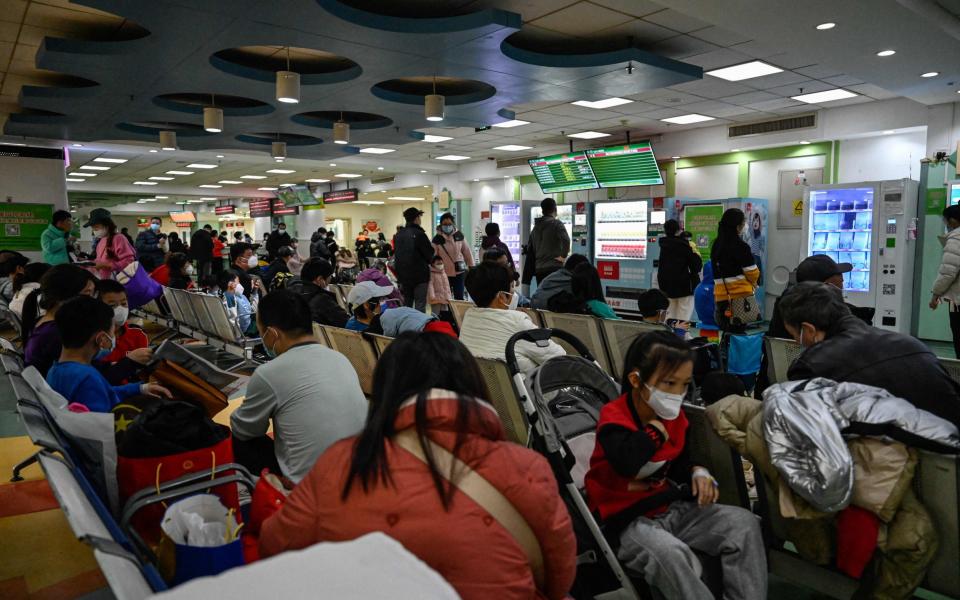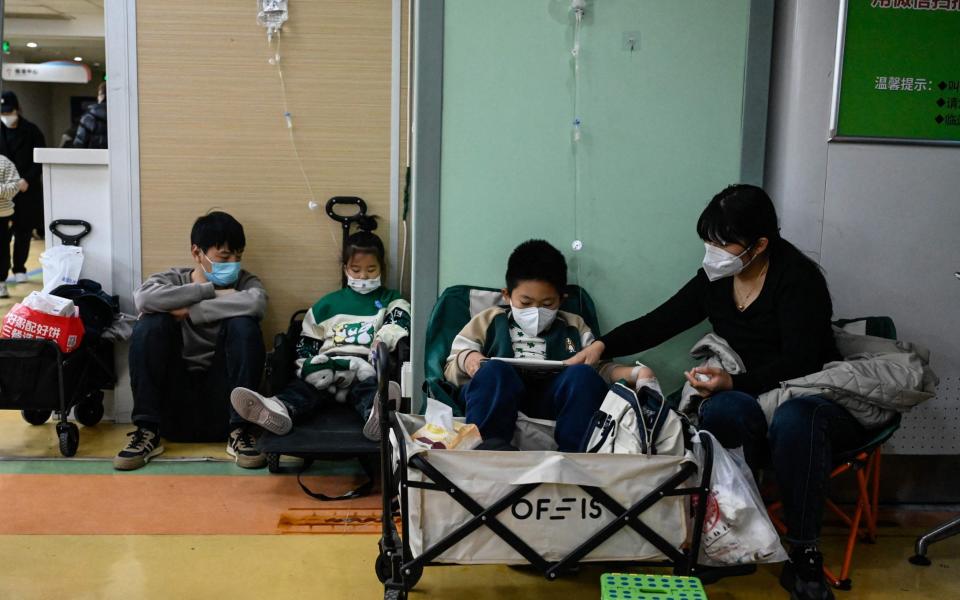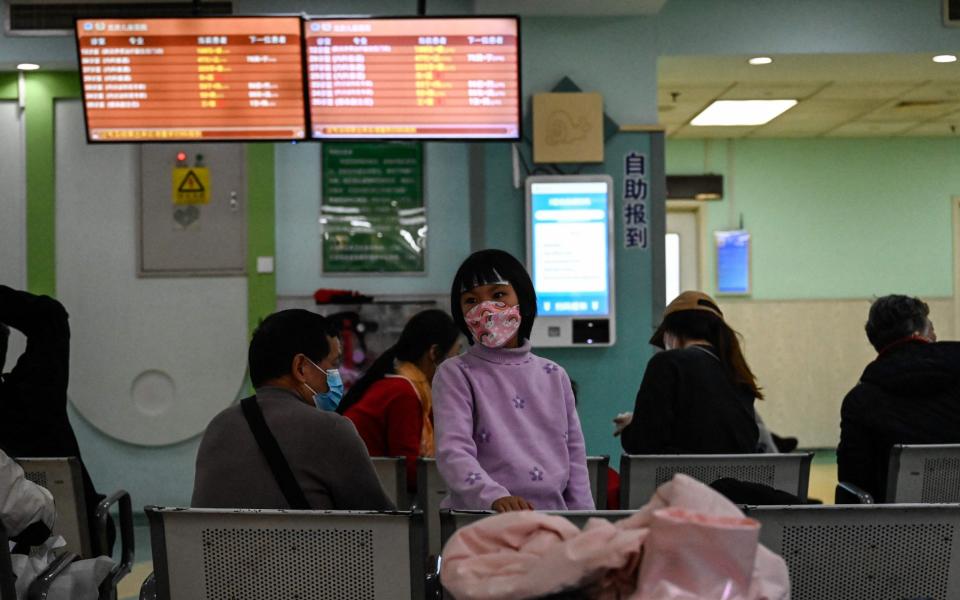Chinese authorities say they have no evidence that “unusual or new” pathogens are causing a wave of childhood pneumonia infections in the country.
Health records released Thursday following demands from the World Health Organization showed that Chinese hospitals first recorded an increase in childhood cases of respiratory illnesses in May, five months before China reported the increase.
Doctors in several cities, including Beijing, have recently reported an influx of sick children with an “undiagnosed” respiratory illness, according to ProMed, a public surveillance system that monitors global disease outbreaks.

The Chinese Center for Disease Control and Prevention on Thursday denied reports that hospitals had been overwhelmed.
Doctors and health agencies in China believe RSV, influenza and Mycoplasma pneumoniae, a common bacterial disease also known as “walking pneumonia,” are responsible for the increase.
These pathogens, they say, are recovering in the first post-lockdown winter in China as part of a trend seen in other countries where strict pandemic restrictions led to a weakening of population immunity.
But internationally, some have raised doubts about China’s transparency, amid concerns that an unknown pathogen is responsible for the illnesses.


After issuing an “official request” for more information, the WHO said Thursday it held a teleconference with officials from the Chinese Center for Disease Control and Prevention and Beijing Children’s Hospital.
The data provided indicated an increase in cases of Mycoplasma pneumoniae pneumonia since May and of RSV, adenovirus and influenza viruses since October.
“Some of these increases occur earlier in the season than has been historically experienced, but are not unexpected given the lifting of COVID-19 restrictions, as similarly experienced in other countries,” the WHO said in a statement. release.
“Chinese health authorities did not report any change in the presentation of the disease.
“Chinese authorities reported that no new or unusual pathogens or unusual clinical presentations have been detected.”
The statement noted: “They further stated that the increase in respiratory illnesses has not caused patient load to exceed hospital capacities.”
Videos show crowded hospitals
Weibo, a Chinese social network, is full of video clips reminiscent of the early days of the Covid-19 pandemic.
In one video, a crowded line of parents holding intravenous drips over their children’s heads snakes through a waiting room in Xi’an, a large city in central China.
Another clip shows hundreds of people wearing masks queuing outside Beijing Children’s Hospital, while one photo warns that more than 700 are already queuing to see a doctor.
“Dear parents, there are many children suffering today,” says the bulletin of a regional hospital. “It takes about 13 hours to wait for treatment.”
Concerns initially arose in an alert from ProMed, which first alerted the world to a mysterious virus later named Sars-Cov-2 in December 2019.
The notification suggested that the reported symptoms were not consistent with common pathogens seen during winter, such as RSV, suggesting that an “undiagnosed respiratory illness” may be spreading.
“This report suggests a widespread outbreak of an undiagnosed respiratory illness… It is not entirely clear when this outbreak began, as it would be unusual for so many children to be affected so quickly,” an editor’s note said.
For many people, the alert brought back memories of 2019.
“Last time I saw reports of an outbreak of undiagnosed pneumonia in China [I] I thought, naa… no big deal. It won’t be much,” Dr. Neil Stone, an infectious disease specialist at University College Hospital in London, wrote on X, formerly known as Twitter.


“That was in December 2019. Don’t make the same mistake again.”
But others say ProMed has jumped to conclusions, which could be a reflection of internal changes.
In the summer, the International Society of Infectious Diseases, which operates the 30-year-old system, announced it planned to move to a subscription-based model amid financial problems. In protest, at least 21 of the 38 paid contributors went on strike.
“ProMed has been struggling to keep up since it upset all its free contributors by charging them a subscription fee,” Professor Ben Cowling, an epidemiologist at the University of Hong Kong, told the Telegraph. “Many of their best contributors walked out in protest.”
He added that the alert “does not appear to be new news,” pointing to a China Daily report about a rise in Mycoplasma pneumoniae cases last month.
“I’m pretty sure it’s the same story…it seems [to be] mycoplasma pneumonia plus a general winter increase in all respiratory viruses,” Professor Cowling said, adding that Hong Kong could see a similar increase in acute respiratory infections in the next two to three months.
Within China, where clips of children connected to intravenous drips doing their homework in waiting rooms have gone viral, this is the explanation given by doctors and health authorities.
It’s a trend that has also been seen in countries such as the UK and US, as other pathogens rebounded due to weakening population immunity after years of suppressed transmission.
More recently, local media have reported a steady rise in infections related to Mycoplasma pneumoniae, a bacteria that usually causes mild colds in older children and adults, but can trigger pneumonia in younger children. Symptoms can last for weeks.
Tong Zhaohui, vice dean of Beijing Chaoyang Hospital, China’s top respiratory medical center, said last week that the mycoplasma positivity rate among children has risen to 40 percent, compared with just six percent among adults, according to Bloomberg. He added that the germ tends to cause major outbreaks every three to seven years.
On Wednesday, Wang Quanyi, deputy director and chief epidemiology expert at the Beijing Center for Disease Control and Prevention, added that the city has “entered a season of high incidence of respiratory infectious diseases” in an interview with state media. BeijingNews. There is a “tendency for multiple pathogens to coexist,” he said.
“It is important to consider that there is probably a background of seasonal respiratory infections,” David Heymann, professor of infectious disease epidemiology at the London School of Hygiene and Tropical Medicine and former WHO executive, told the Telegraph.
“[The] The challenge is to discern outbreaks and determine the cause; There are many different known viruses that could be the cause and all of them should be looked for by testing. At the same time, isolation and sequencing will also provide answers.”
However, on Thursday morning, after including comments highlighting media reports of the Mycoplasma outbreak, ProMed repeated its concern that the symptoms described in media reports were not consistent with Mycoplasma.
As the world waits for answers, the WHO urged China to “follow measures to reduce the risk of respiratory diseases.”
“I was very worried when the first alert reports appeared at the end of 2019 and now I am worried,” Dr. Krutika Kuppalli, an infectious disease expert and member of the WHO health emergencies team, wrote in X.
“This is the first winter in China without [a] strict lockdown and could have a [increase] in respiratory infections as other countries did when emerging from the blockade. This could be anything; Let’s get more information.”
Broaden your horizons with award-winning British journalism. Try The Telegraph free for 1 month, then enjoy 1 year for just $9 with our US-exclusive offer.